Ellen Gallagher: Don’t Axe Me
Meticulous layering breaks through the canvas to reinvent visual contexts and explore future possibilities in the New Museum exhibition

by LinYee Yuan
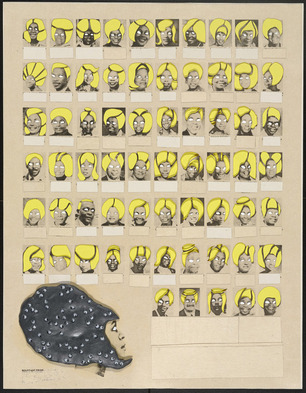
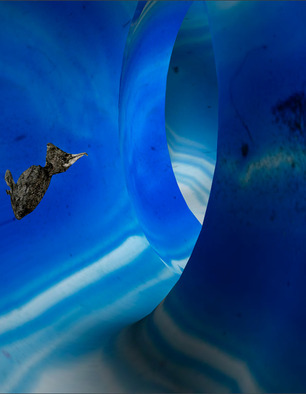
Those familiar with the work of American artist Ellen Gallagher often view her delicate works on paper and canvas through the lens of racial and gender politics—Gallagher’s “DeLuxe” series famously abstracted African-American beauty and style advertisements from the ’50s with layers of yellow plasticine and carefully excised bits of paper.
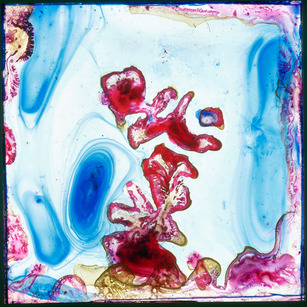
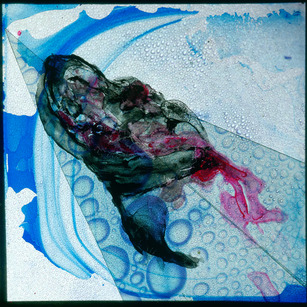
But in “Don’t Axe Me,” Ellen Gallagher’s first major museum exhibition in NYC, the New Museum sought to “get away from the singular reading of Ellen’s work,” explained curator Gary Carrion-Murayari, “and really look at the way she treats the surfaces of her paintings, drawings and films to incorporate a wide variety of ideas, images and systems of knowledge.” A survey of over 20 years of art production defines a practice concerned with physically excavating ideas and images from cultural history, text and nature.
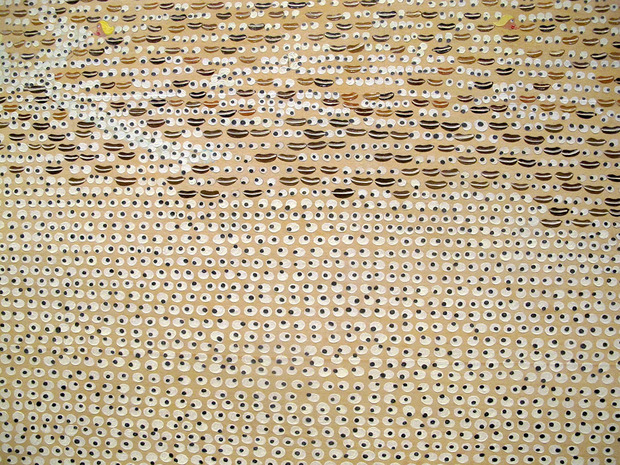
The gridded, collaged canvases of Gallagher’s ’90s works deal in eyes and lips borrowed from American minstrelsy, repeated as patterns across canvas. In the 2000s, a practice of layered paper cuttings produced a parallel series of work: the delicate underwater creatures of “Watery Ecstatic” and the cultural commentary of “DeLuxe.” In explaining her creative process for “Watery Ecstatic” in the Art21 documentary, Gallagher says, “[These are] my version of scrimshaw, the carving into bone that sailors did when they were out whaling. I imagine them in this overwhelming, scary expanse of sea where this kind of cutting would give a focus, a sense of being in control of something.” Her portrayal of sea life is meditative in its detail and restraint. Whereas the subjects of “Watery Ecstatic” give the viewer a sense of control, the sprawling collage of material in “DeLuxe” is a feast of imagery—Gallagher transforms found material by cutting away eyes and text, builds textures through layered plasticine and arranges these altered advertisements in grids.
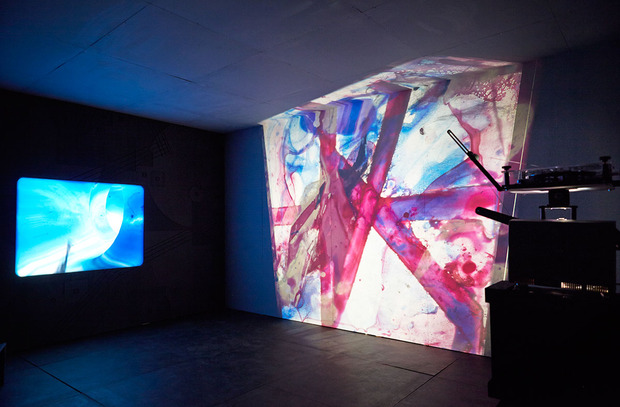
The New Museum show also includes the New York City debut of “Osedax”—Gallagher’s 2011 collaboration with partner Edgar Clejine—a video installation crafted with 16mm film and slide projections, housed in an inscribed box. Visitors duck under a low entryway and enter into Gallagher and Clejine’s underwater world. Engaging again with the myriad mysteries of the sea, “Osedax” was inspired by a species of undersea worms that burrow into the bones of whale carcasses.
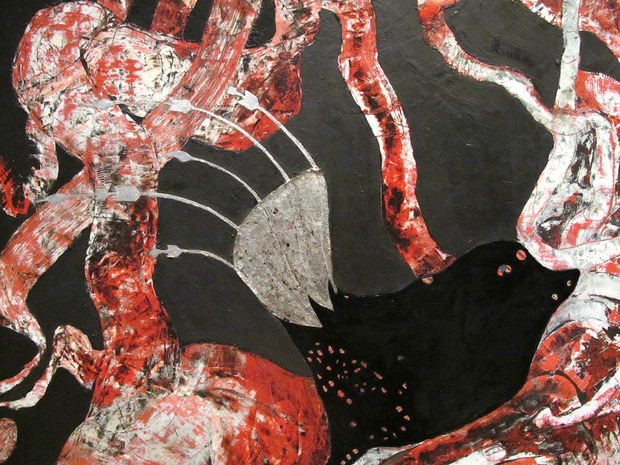
In a series of recent untitled paintings, Gallagher continues her exploration of excavating canvases by cutting away layers of paint and paper. Abstracted figures seemingly writhe across the surface, emerging and then retreating back into the canvas. Collaged material creates a texture of eyes and floating letters, hues and shapes, decontextualized and repurposed for Gallagher’s unique brand of storytelling.
Ellen Gallagher’s work confronts cultural histories and reimagines future possibilities through a meticulous process of layering, excising and rearranging fragments to create new contexts. “Don’t Axe Me” sheds light on the rigor and complexity of Gallagher’s way of working and creates more space for the artist’s explorations.
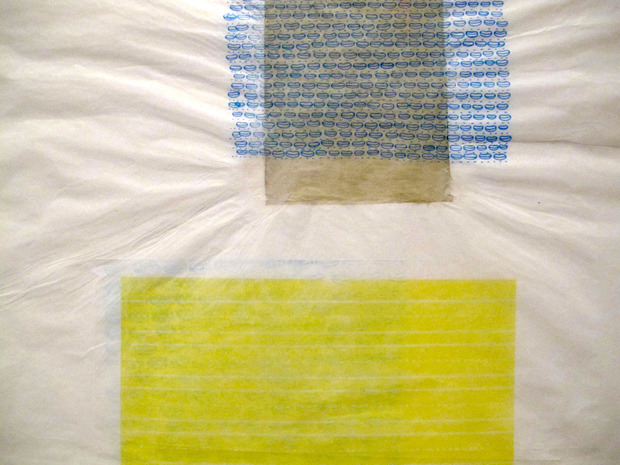
“Don’t Axe Me” runs through 15 September at the New Museum in New York City, concurrently with “AxMe,” Gallagher’s large survey now on view at London’s Tate Modern.
Detail images courtesy of LinYee Yuan, “Osedax” installation images courtesy of Benoit Pailley, and full artwork images courtesy of Ellen Gallagher









